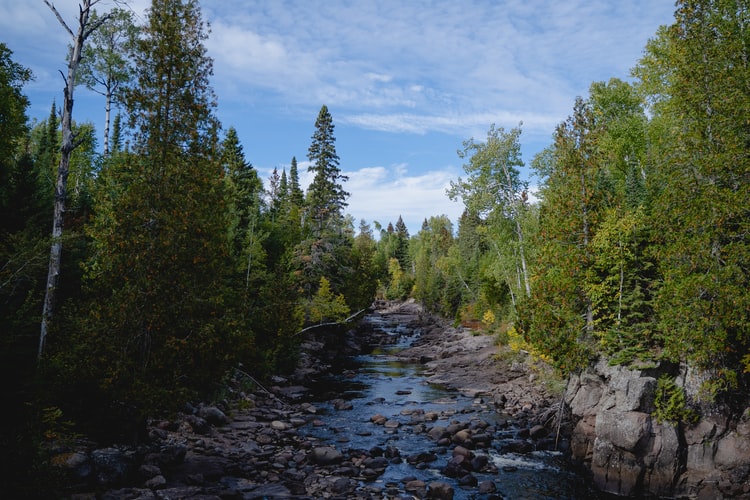
Matt Doll, Minnesota Environmental Partnership
This week, two federal decisions dealt victories to clean water, one at the national level, and one in Minnesota.
On Monday, an Arizona District Court overturned the Trump Administration’s change to the Waters of the United States (WOTUS) rule, a change referred to by critics as the “Dirty Water Rule.” Under the Trump rule, the federal EPA and Army Corps of Engineers vastly decreased the number of waters within their jurisdiction under the Clean Water Act, mostly relinquishing authority over roughly 1 in 5 small streams and half of all wetlands previously protected. The drought that has gripped Minnesota this year is drying up the small streams and vividly showing us the waterways that have lost protection under the Dirty Water Rule.
The lawsuit to overturn the Dirty Water Rule was litigated by the environmental group Earthjustice on behalf of a group of six Indigenous tribes, including the Fond du Lac Band of Lake Superior Chippewa in Minnesota. Their cultures and livelihoods are especially reliant on water resources, and the tribes argued that the rule would cause disproportionate harm.
The Dirty Water Rule always rested on shaky legal and scientific ground. All streams and wetlands feed into larger streams and watersheds: there are no waters that exist in a vacuum, and pollution in those small streams flow into other waters. Furthermore, the rollback especially impacted dry, Western states that have fewer and smaller permanent waterways than states like Minnesota, leaving them vulnerable to pollution. Minnesota wetlands are protected by our Wetlands Conservation Act, but what happens to wildlife in other states can dramatically impact ecosystems here – birds and fish don’t have much regard for state borders.
Now that the rollback has been overturned, it will not immediately result in full protection for streams and wetlands.The Dirty Water Rule successfully repealed the Obama Administration rule and this court decision did not restore it, although the judge in the case asked for briefings on whether to overturn the repeal. For now, protections will revert to what they were under the pre-Obama rule dating from 1986. But the EPA under President Biden is currently working on a new iteration of the rule that will almost certainly be more ambitious, and will likely have an easier path forward now that the agency no longer has to work on repealing President Trump’s “Dirty Water Rule.”
Minnesota feedlot rule
Minnesota suffered our own rollback to clean water protections earlier this year when the Legislature’s compromise Environmental Omnibus bill eliminated a commonsense restriction on spreading manure from large feedlots, aiming to reduce nitrogen runoff.
Starting in February, the Minnesota Pollution Control Agency (PCA) updated its permit to large feedlots, a category that includes about 1,200 of Minnesota’s largest dairy and meat producing operations. Under the revised permit rules, feedlots were barred from spreading manure on crops used to feed livestock during the first 15 days of October, unless the feedlots use practices, such as cover crops, to reduce nitrogen loss.
Manure is a major contributor to nutrient pollution in our waters, causing the buildup of toxic nitrate in aquifers that leads to unhealthy wells as well as downstream “dead zones” in the Gulf of Mexico. And the largest feedlots in Minnesota produce an enormous quantity of the stuff, making them a logical place to reduce runoff. The October manure restriction didn’t represent a radical solution, but it does make scientific sense: with cooler temperatures and bare soils, early October is a time when manure runoff can easily infiltrate our groundwater. And by providing a means for feedlots to mitigate it with cover crops, the PCA sought to introduce flexibility for adapting to the permit change.
Even this commonsense protection was a bridge too far for some legislators, however, who negotiated to include a rollback of this rule in the final environmental budget and policy bill over the objections of the PCA. But the PCA pointed out then that if the EPA thought the legislation violated federal law, it would be overturned.
This week, that’s exactly what happened. The EPA sent a letter to the PCA stating that the permit change from the Legislature conflicted with federal regulations on feedlots. The repeal, it seems, ended up being more symbolic than anything, and large feedlots will have to abide by the October manure restrictions after all.
The implications for people and wildlife
These changes to water rules are more than bureaucratic tweaks: they will have real impacts on how we keep pollution out of our precious water resources, and can open the door for more ambitious action on issues like nitrate and other pollutants. They also represent an encouraging sign that the bedrock protections of the Clean Water Act are still holding strong. As our climate changes and our waters along with it, we’ll need to build on that bedrock to make sure that future generations of people and wildlife can enjoy safe, drinkable water.